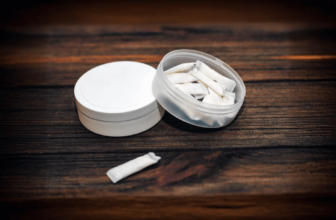With the craze over THC and CBD dying down now that more people are aware of what they are, many are starting to wonder what CBG is (cannabigerol)and the other cannabinoids are like? Called the mother of all cannabinoids, most cannabinoids start their life off as CBG before converting into another.
The Origins of CBG (Cannabigerol)
Forming early in the cannabis plant’s growth cycle, CBG is the precursor to nearly every cannabinoid researchers have identified so far. Primarily, CBG is converted into THC and CBD during the plant’s life cycle, leaving only about 1% CBG on average. However, some strains produce greater amounts, allowing cultivators to breed strains that are considered high in CBG.
During a cannabis plant’s growth cycle, when the acidic form of CBG (CBGa) is exposed to heat and light, especially UV light, enzymes will start breaking CBGa down into different cannabinoids. To avoid this, plants can be harvested earlier than normal.
While most cannabis strains are low in CBG, both the hemp and marijuana varieties produce CBG. And despite the trace amounts, CBG can still have a fairly notable influence on the effects felt from both varieties.
Unlike THC and CBD, you can also find CBG in the herb wooly umbrellas (Helichrysum Umbraculigerum), where it appears in rather high concentrations compared to cannabis.
Potential Therapeutic Properties of CBG
While CBG interacts with both CB1 and CB2 receptors, CBG is non-intoxicating and will not overstimulate CB1 receptors and cause euphoria. However, research has found that its interaction with CB1 receptors is potent enough for it to mitigate pain perception, making CBG a potentially great candidate for managing chronic pain.
Additionally, CBG”s anxiolytic properties suggest it may help alleviate anxiety along with helping insomnia, as CB1 receptors are widely distributed in the central nervous system, where they play a role in regulating sleep patterns.
The biggest thing holding our understanding of the potential therapeutic properties of CBG is the lack of research. While most think of THC — despite its ability to cause a high — and CBD as the most therapeutic cannabinoids, research may reveal that CBG is preferable for many common health issues. It seems that CBG may live up to its motherly nature in more ways than one.
CBG vs CBD: Understanding the Differences
Similar to CBD, CBG can increase levels of anandamide in the body. However, it appears to do that by inhibiting NAAH enzymes vs. FAAH. Due to their molecular differences, CBG has a greater affinity for CB2 receptors, which may allow it to have a more direct influence on the peripheral nervous system and immune function. CBG is said to be better for cognitive function, whereas CBD is better for mood disorders.
Another difference between CBG and CBD is CBG’s apparent high affinity and activity at alpha-2 adrenergic receptors. In fact, CBG appears alone amongst the other cannabinoids in this regard.
Even when CBD and CBG are said to both help with the same conditions (anxiety, inflammation, etc.), they aren’t necessarily helping with those conditions in the same way. This is likely why most people prefer full spectrum cannabis products that include all the cannabinoids and terpenes cannabis plants produce.
The Current State of Research About CBG
Despite being called the mother of all cannabinoids, since its molecular structure provides the foundation for other cannabinoids, research on CBG is limited. Early research has been promising, and while CBG appears rather safe when found in naturally occurring concentrations, its high affinity and potent activity at alpha-2 adrenergic receptors draw concern.
CBG’s unique love for alpha-2 adrenergic receptors may be its double-edged sword because while it may allow CBG to help neurological diseases in a way the other cannabinoids can’t, it may cause side effects not seen with the others. No doubt, future studies will be looking heavily into this matter. As well, CBG studies have been pretty much limited to mice and rat studies.
There are current studies taking place that are working to provide exploratory research into the in-vivo physiological and psychological effects of CBG. Hopefully, this means within just a year or two, we will have a much better understanding of CBG.
CBG in the Market
As seen with other cannabis products, CBG products lack considerable regulations, making it a high priority that you thoroughly research any CBG item before using. If you were aware of CBD products before they reached a wide audience, you may be all too aware of the Wild West nature of these new and unfamiliar cannabinoid products.
As seen with other cannabinoid products, CBG comes in both full spectrum and isolated versions. Both are good options, especially if you’re using a CBG isolate in tandem with a full spectrum cannabinoid item to help capture the entourage effect.
Classic cannabis strains like White Widow can be high in CBG, but your best bet is newer strains grown specifically to produce more CBG.
Even when creating CBG extracts from cannabis strains bred to contain higher concentrations of CBG than normal, it’s incredibly important the extract undergoes third-party lab testing as it’s one of the best ways to combat the lack of regulation.
Conclusion: Why Should You Try CBG?
With most cannabinoids starting their existence off as CBG, it’s hard not to get excited about trying this motherly cannabinoid. Additionally, CBG’s unique ability to target receptors that other cannabinoids largely avoid pushes interest in it to the forefront over hundreds of other cannabinoids produced by cannabis plants.
Due to limited research, we recommend consulting a medical expert before using a product high in CBG. For those looking for a stronger version of CBD without triggering the high seen with THC products, CBG might be the perfect candidate for you.
FAQs
What is the legal status of CBG?
In the United States, CBG is legal under the Agricultural Act of 2018 (Farm Bill). Regardless, you should always check your local laws and regulations. If CBD products are legal in your area, then it’s likely CBG is too.
How is CBG different from CBD and THC?
Unlike THC, but like CBD, CBG is non-intoxicating and won’t cause a high. Unlike CBD, but like THC, CBG directly targets CB1 and CB2 receptors.
Unlike either, CBG’s strong affinity for alpha-2 adrenergic receptors and CB2 receptors could make it a much better cannabinoid for treating anxiety and neurological diseases.
What are the potential benefits of CBG?
CBG has both unique and overlapping benefits seen in other cannabinoids — the pathways they achieve those overlapping benefits can be different, however. Currently, research is interested in CBG’s ability to help manage chronic pain, anxiety, and insomnia, in particular.












